Generation of workloads to test RAMCloud
...
- Number of rpcs
- Internal Hash-table size
- Actual DRAM used versus raw DRAM required for object contents
Graphs of interest
Round 6 - InfRC - (generated with code version - commit 24f6d2)
- New cluster with 36 nodes total used.
- master/coord at rc01.rccluster. clients on all other nodes - rc01-36.rccluster
- latency and throughput curves measured for different objects sizes read under load (both quantities are measured in the same experiment)
- only reads are measured - single object within a single table is read
- Object sizes at 100, 1000 and 10000 bytes
- transport=infrc, Throughput versus load
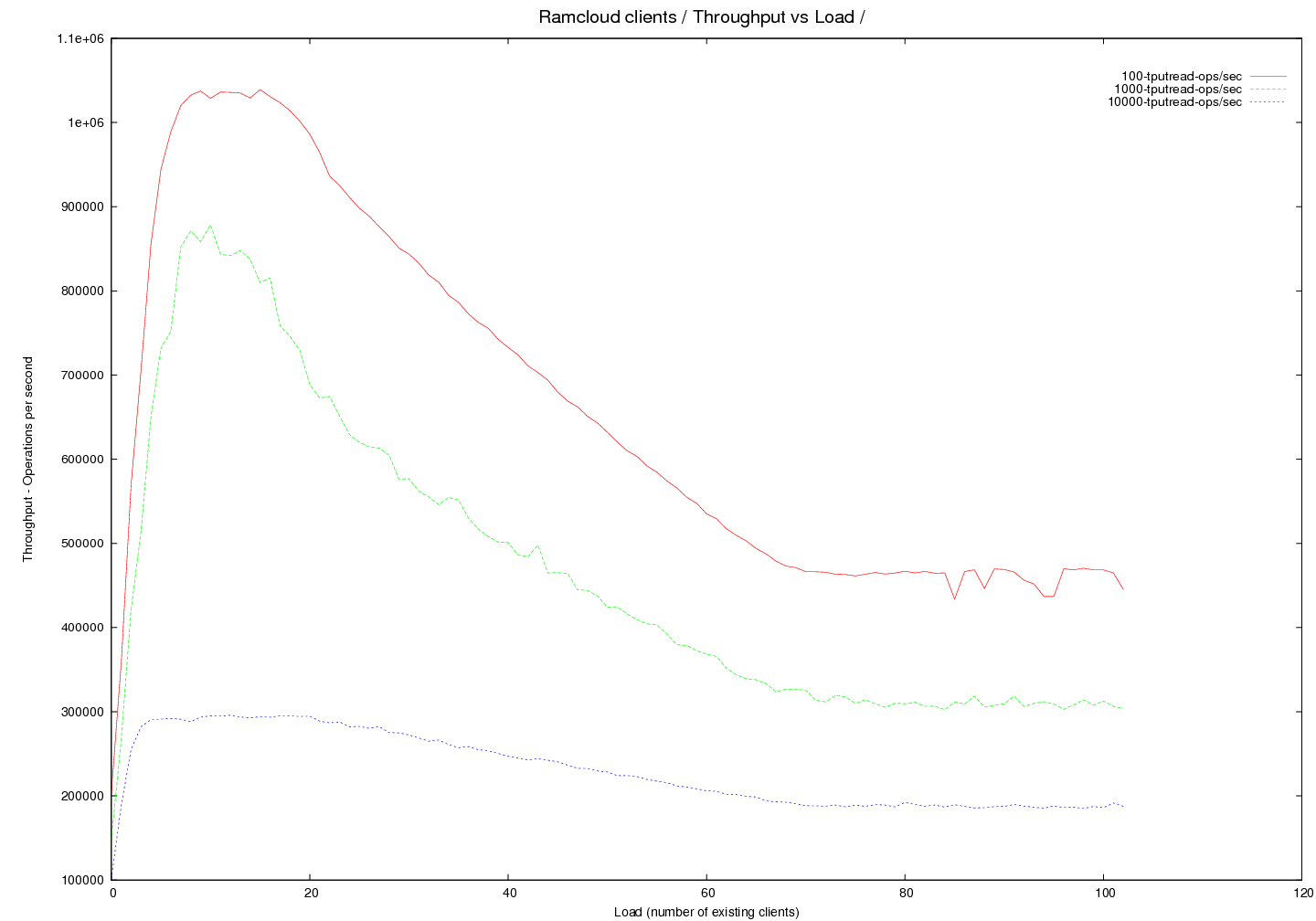 Image Added
Image Added
- transport=infrc, Latency versus load
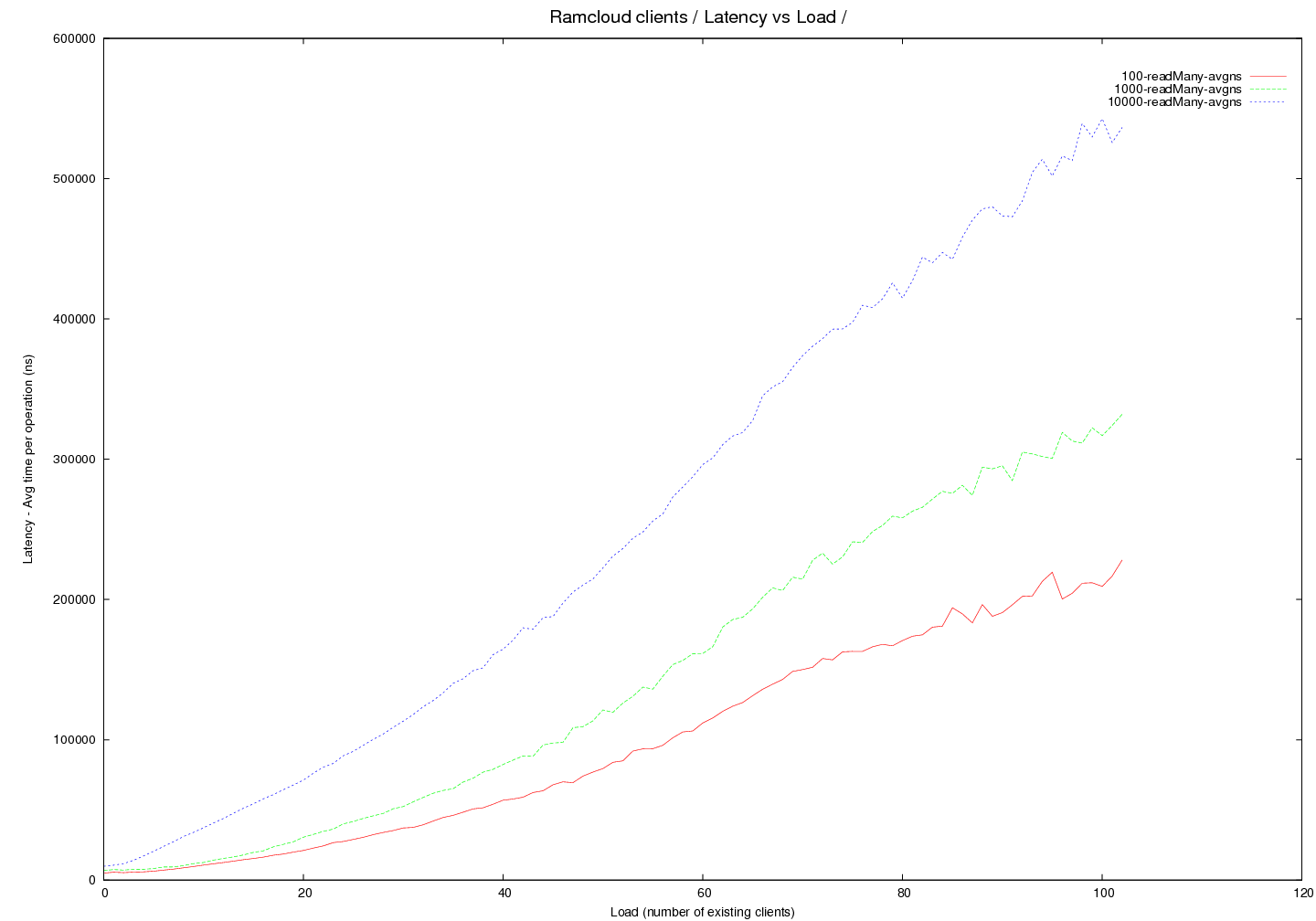 Image Added
Image Added
Round 5 - InfRC - (generated with code version - commit 24f6d2)
- New cluster with 33 nodes total used.
- master/coord at rc01.rccluster. clients on all other nodes - rc01-36.rccluster
- different objects sizes
- load vs time-per-operation measurements only.
- transport=infrc, Operations per second (throughput) versus load with 1000 byte objects
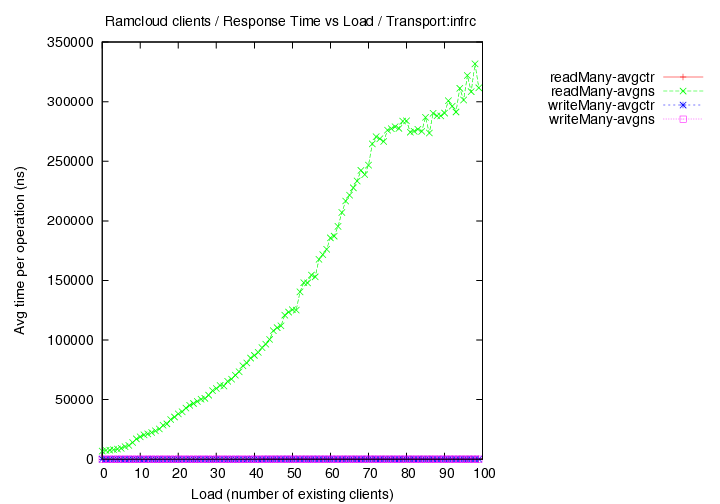 Image Added
Image Added
- transport=infrc, Operations per second (throughput) versus load with 100 byte objects
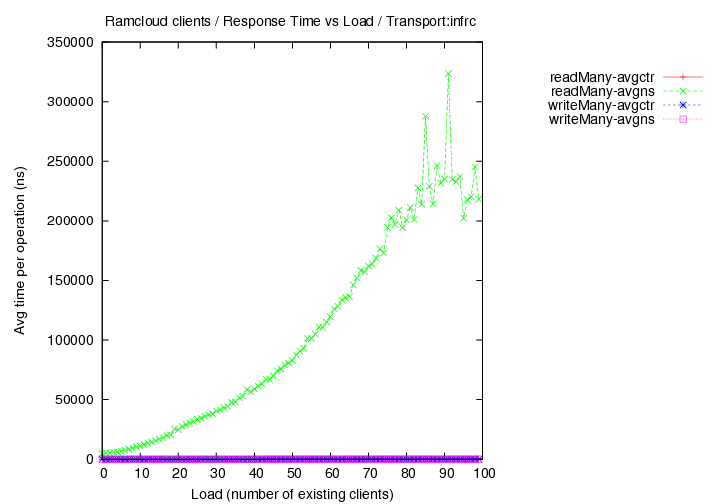 Image Added
Image Added
Round 4 - InfRC - (generated with code version - commit db388ad3)
- Reference measurement - Steve's access of 100 byte objects on single server - 7000 ns
- Single server round trip time - 100,000 measurements - 100 byte objects in 4833 ns run-bench script
- No load - 100,000 measurements - master/co-ord on rc01, client on rc02 - 100 byte objects in 5109 ns run-perf script
- No load - 10,000,000 measurements - master/co-ord on rc01, client on rc02 - 1000 byte objects in 5093 ns run-perf script
- 10.0.0.x NICs were used.
- 1 hour passes - cluster is as idle as the last experiment. But.....
- Single server round trip time - 100,000 measurements - 100 byte objects in 9869 ns run-bench script
- No load - 100,000 measurements - master/co-ord on rc01, client on rc02 - 100 byte objects in 9878 ns run-perf script
- transport=infrc, Operations per second (throughput) versus object size
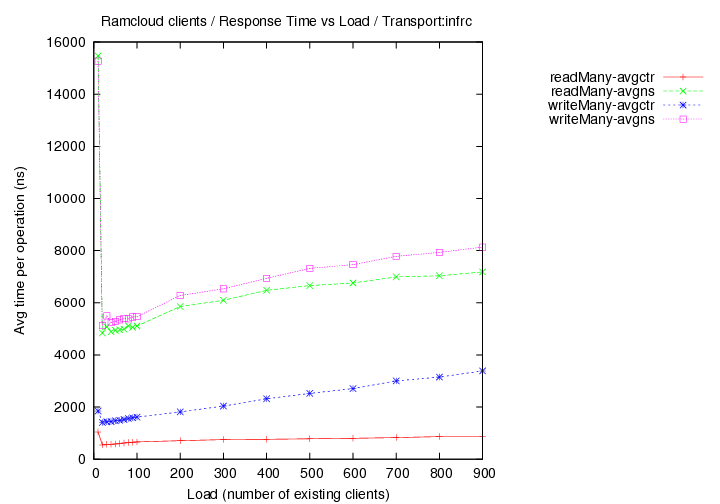 Image Added
Image Added
Round 3 - (generated with code version - commit db388ad3)
- Co-ordinator and Server are both running on rc01
- Client making timing measurements is at rc03 - the queen
- Load - additional clients are run on rc04-6. If load > 3 is required, multiple clients are run on the same node. The Workers.
- Builds are with DEBUG=no unless otherwise noted.
- Object size is fixed at 1000 bytes.
- transport=infrc, Operations per second (throughput) versus load (number of running clients).
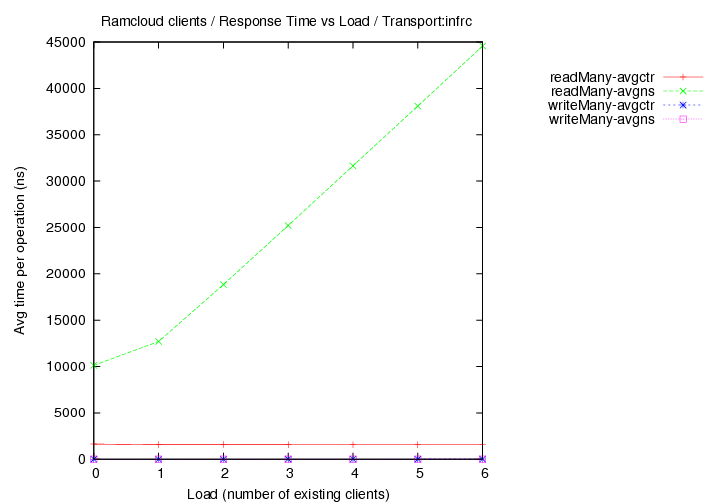 Image Added
Image Added
- transport=tcp, Operations per second (throughput) versus load (number of running clients).
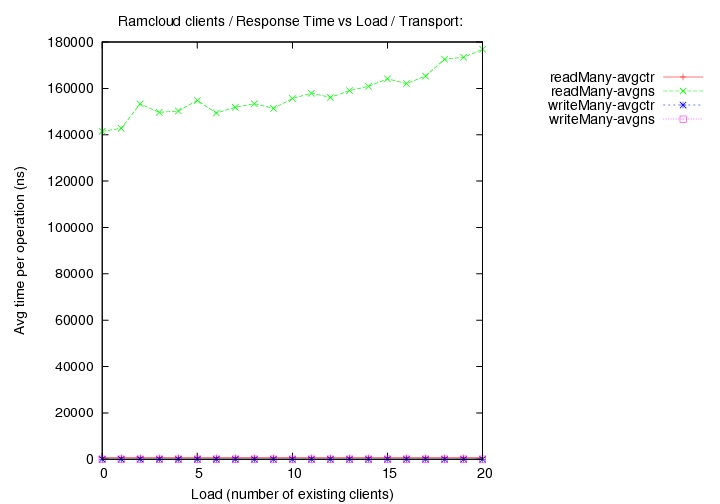 Image Added
Image Added
- transport=fast+udp, Operations per second (throughput) versus load (number of running clients).
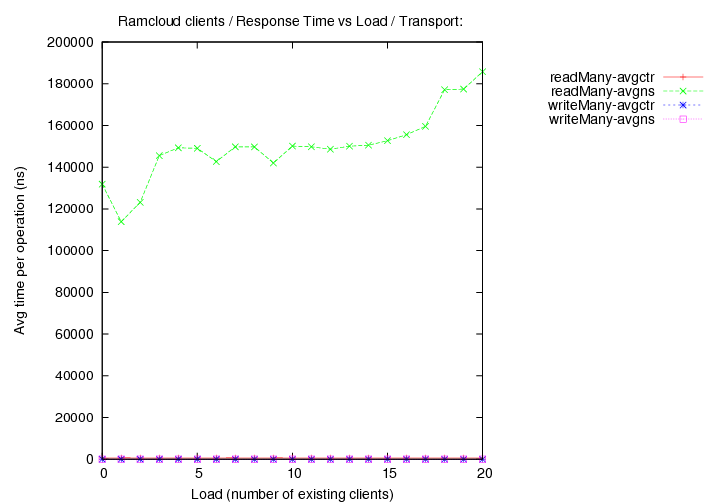 Image Added
Image Added
Round 2 - (generated with code version - commit 7a861e)
- Co-ordinator and Server are both running on rc01
- Client making timing measurements is at rc02
- Load - additional clients are run on rc03-8. If load > 6 is required, multiple clients are run on the same node.
- Builds are with DEBUG=no unless otherwise noted.
- Object size is fixed at 1000 bytes.
- Each "load" client is another instance of Bench, each running ten times as many operations as the measuring Bench client with continuous operations)
- transport=infrc, Operations per second (throughput) versus load (number of running clients).
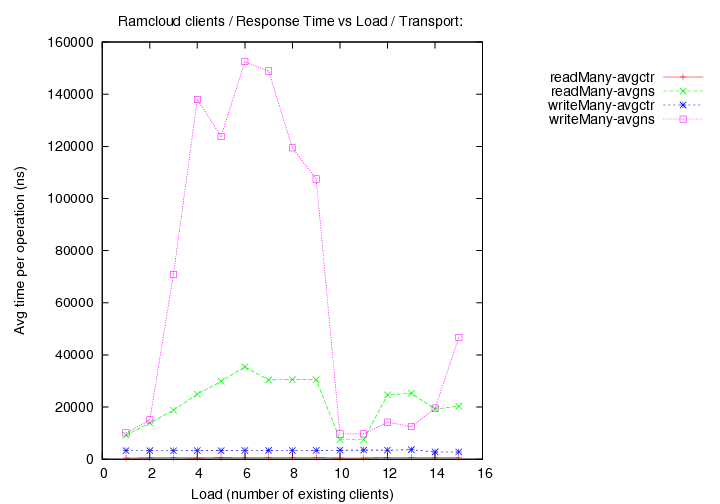 Image Added
Image Added
- transport=tcp, Operations per second (throughput) versus load (number of running clients).
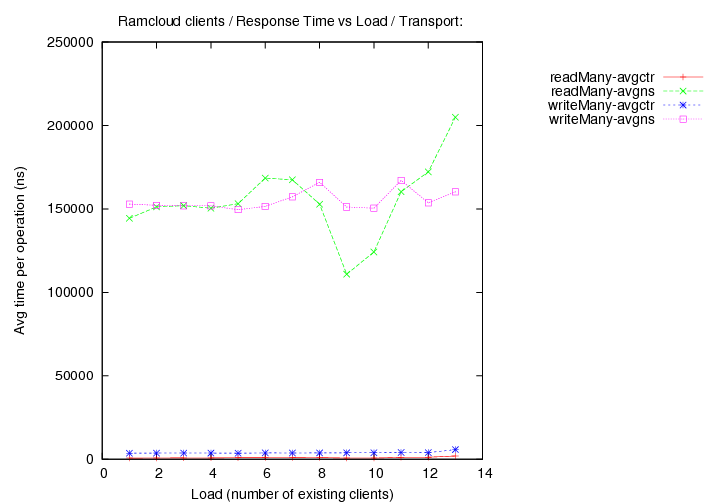 Image Added
Image Added
- transport=fast+udp, Operations per second (throughput) versus load (number of running clients).
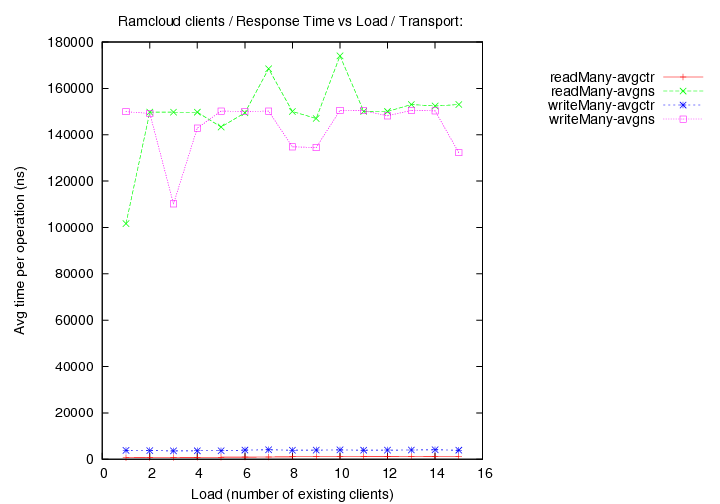 Image Added
Image Added
- DEBUG=yes, transport=fast+udp, Operations per second (throughput) versus load (number of running clients).
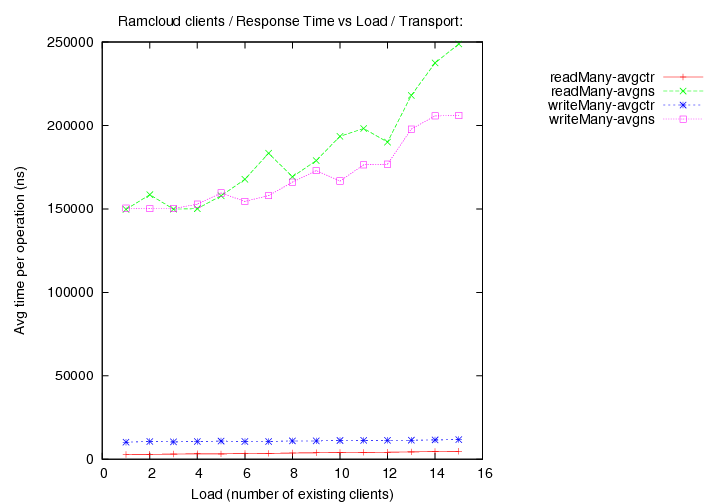 Image Added
Image Added
Round 1 - (generated with code version - commit b6af37)
- Time taken for reads (avg latency in ns) versus object size.
- Time taken for writes (avg latency in ns) versus object size.
(avgns times are as measured at client side. avgctr times are as measured at server using the serverCounter.)
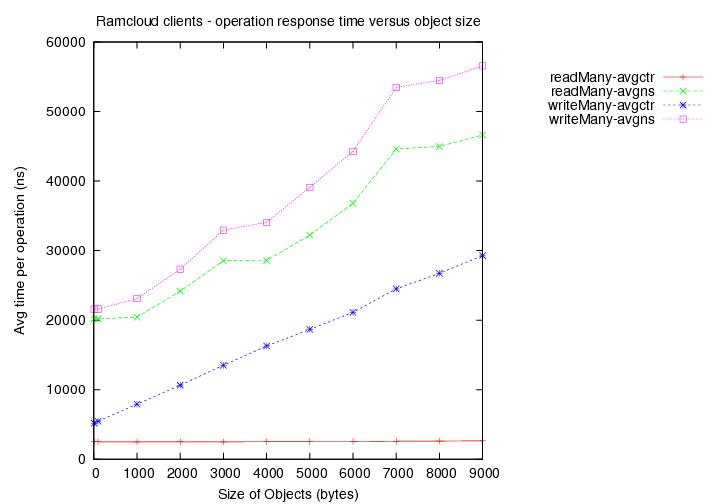 Image Modified
Image Modified
...
- Existing load = 1 client with 1000 byte objects
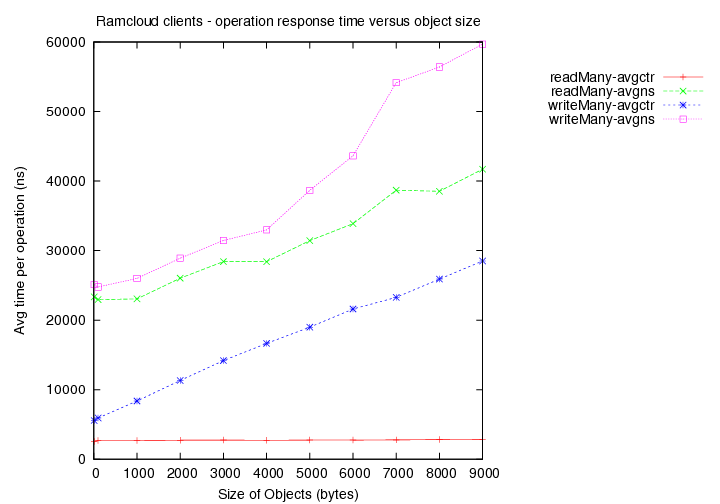 Image Added
Image Added
- Existing load = 2 clients with 1000 byte objects
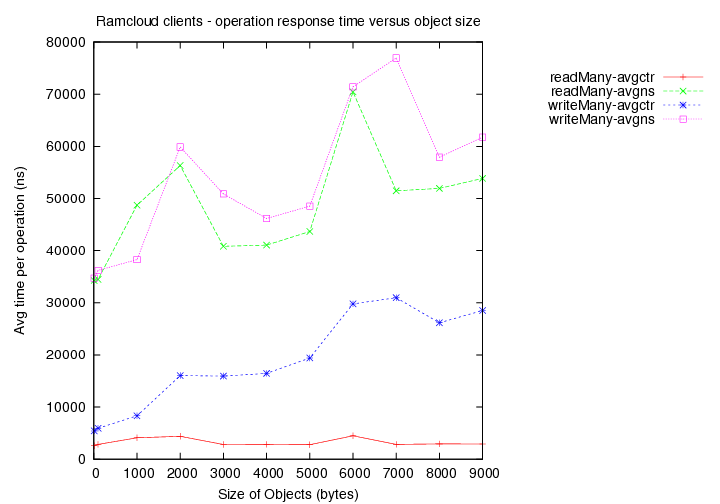 Image Added
Image Added
- Existing load = 5 clients with 1000 byte objects
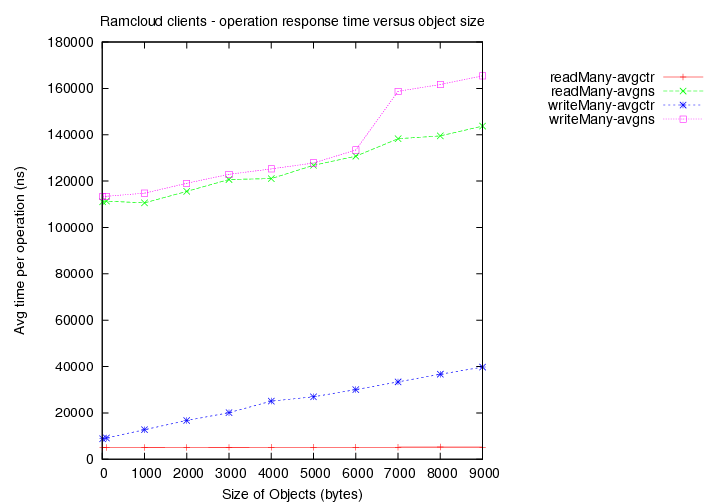 Image Added
Image Added
- Existing load = 10 clients with 1000 byte objects
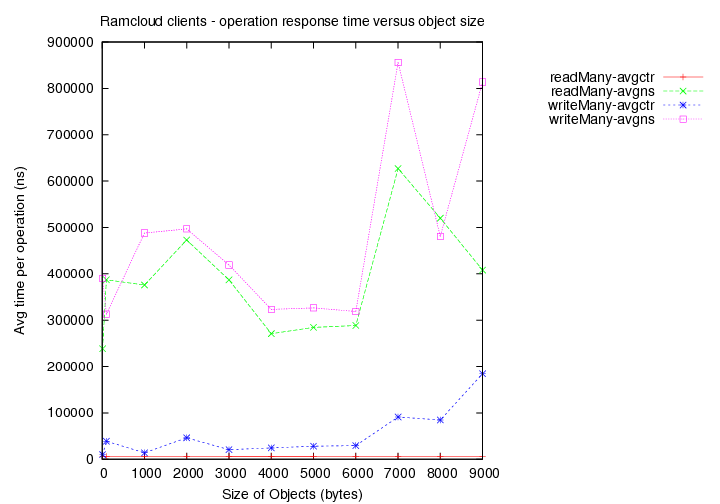 Image Added
Image Added
- Operations per second (throughput) versus load (number of running clients, fixed object size of 1000 bytes).
(each client is another instance of Bench, each running ten times as many operations as the measuring Bench binary with continuous operations)
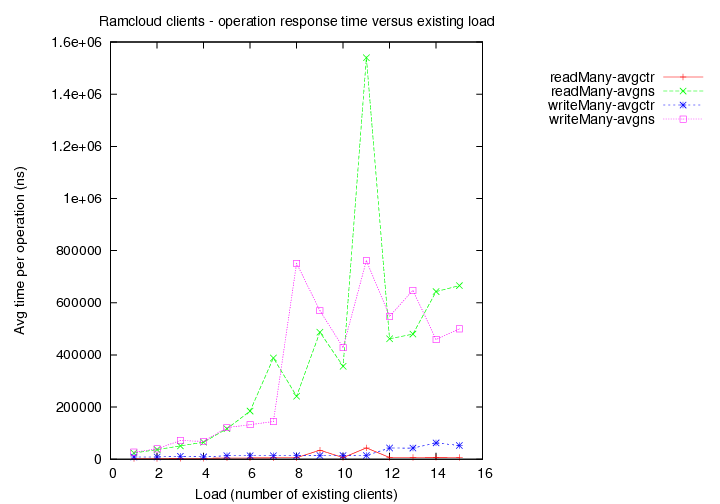 Image Added
Image Added
Simulated workload types
1- Banking Website
...
{"serverDuration": 454, "requestCorrelationId": "5731e2aab3ee44548f8ee3a58d8194d6"}

















